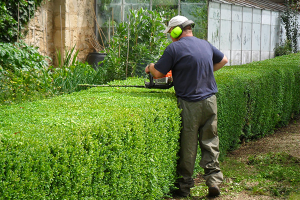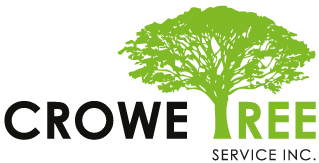Cedar Hedge Care in Ottawa

A cedar hedge is a relatively simple way to provide privacy for your yard, and these easy-to-grow plants also add a lovely, formal look to a landscape. The evergreen foliage provides year-round color and interest but requires some pruning and maintenance to keep the trees looking sharp.
Varieties of Cedar Hedges Ottawa
Several species of cedar trees can be used for hedges, but the most common is Thuja occidentalis, commonly known as American arborvitae, Eastern arborvitae, Eastern white cedar or Northern white cedar, which can thrive as a perennial in U.S. Department of Agriculture plant hardiness zones 3 to 7. Thuja occidentalis “Sudwelli” can tolerate the climate in USDA zone 8, while T. occidentalis “Hetz Wintergreen” does well up to zone 9. T. occidentalis “Holmstrup” is a dwarf cultivar discovered in Denmark that reaches 5 to 8 feet tall over the first 10 years.
Site Location of Your Cedar Hedges Ottawa
You must choose the location for your cedar hedge wisely. The non-dwarf cultivars can eventually reach 15 feet in the case of Thuja occidentalis and up to 60 feet with cultivars such as “Sudwelli” if not pruned. Avoid situating your cedar hedge close to a walkway or roadway where salt is used in winter; salt can damage these plants. Don’t plant a cedar hedge on or near a steep gradient that can cause moisture loss. For optimal growth, plant in a location that receives full sun to part shade. A cedar hedge lives for 30 to 60 years, depending on the variety and location.
Cultivation
Cedars prefer an organically rich soil, to help maintain moisture, with a pH of 6 to 7.5. When planting white cedars, place individual plants 12 to 18 inches apart. Denser pyramidal cedar cultivars, such as “Emerald” or black cedar (“Nigra”), need to be spaced 18 to 24 inches apart. Add a mixture of soil plus manure, compost, triple mix or peat moss around plants, and water the cedars deeply and regularly throughout the summer and fall to allow root systems to develop. Mature cedars are heavy feeders and need fertilizer every spring or fall.
Pruning Cedar Hedges Ottawa
Cedar hedges won’t need to be pruned the first year or when they are under 3 feet. As hedges mature, start pruning your cedar hedge in early spring. Use the shortest plant as a guide, and trim off tops to match, then do a light trim on the sides. If your goal is to encourage more height, don’t trim the the leader, or topmost, shoot, or just prune a few inches of growth to encourage both height and fullness. Continue pruning throughout the summer, but avoid pruning in temperatures above 85 degrees Fahrenheit or after July, to prevent winterkill on newly-pruned branches. To keep plants healthy, never cut more than one-third of the plant in one season.
Pests and Diseases Affecting Cedar Hedges Ottawa
In general, cedar hedges don’t have serious insect or disease problems. Potential fungal infestations include canker, root rot and keithia blight, and the most common insect attacks come from leaf miners, bagworms, mealybugs, scales, spider mites, cypress tip moths and root weevils. Animals like rodents and dogs can chew lower branches and strip bark from trunks. If necessary, an appropriate fungicide or insecticide may be used, although damage from infestations is usually minimal.
